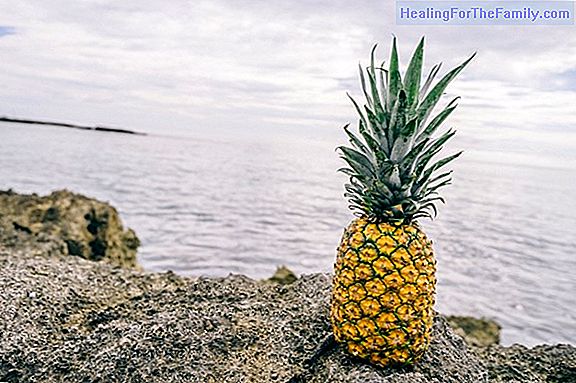Foods that change the taste of breast milk
The maternal diet after birth strongly influences the milk produced by the breast, not in quantity or quality, but in the flavors, odors and quantities of some of the nutrients it contains. The baby tastes different tastes before birth It has been shown that the particles responsible for flavoring f
The maternal diet after birth strongly influences the milk produced by the breast, not in quantity or quality, but in the flavors, odors and quantities of some of the nutrients it contains.
The baby tastes different tastes before birth

It has been shown that the particles responsible for flavoring food are able to cross the placental barrier, so, inside the uterus, where the fetus swallows amniotic fluid in a usual way , is already in contact with the most frequent flavors of his mother's diet. However, although inside the womb the baby can not do anything about it, if he can do it when he is taking breast milk, rejecting it if the taste in question displeases him.
Although this is possible, it is more often the case that babies fed with breastfeeding are more attracted to try and accept new foods afterwards, since they are accustomed to the usual changes in the taste of breast milk. The formula milk, obviously, is always the same, with the same taste and smell, unless you change brands.
Foods that alter the taste of breast milk
Actually, it could be said that all flavors pass into breast milk, but the baby is already used to them and knows them from his intrauterine stay. However, unknown flavors or some known but stronger or more intense, may surprise you, for good as well as for bad.
- Garlic: The fact that the flavors of food pass into breast milk is something that has always intrigued researchers, and there are several studies on this. For example, in one of them, performed more than 20 years ago, garlic pills were used to observe its effect in infants compared to a control group administered pills without garlic (placebo). Interestingly, when the intensity of garlic was higher in milk, babies were more attracted to breastfeeding. This double blind study, where neither the mothers nor the researchers knew who received the garlic pill and who received the placebo, was able to demonstrate the presence of both odor and garlic essence in the composition of the breast milk of the group of mothers who took the garlic pills.
- Asparagus, onions, artichokes and Brussels sprouts: Other foods potentially involved in the intense change of flavor in milk are asparagus, green and white, onions, artichokes, or Brussels sprouts. The taste and odor of these foods is detectable in the milk during a variable period of time, generally, according to the intensity of the milk and the amount of food ingested, so, whatever the effect in the infant, it disappears after a few hours, returning to normal.
The consumption of some of these foods is also related to the appearance of flatulence. This is also not a reason to avoid its consumption during lactation, because, although the mother can suffer a terrible afternoon of gas after eating a dish of gratin cauliflower, for example, the gases that this produces do not cross the intestinal barrier , they do not pass into the blood, and therefore, they do not leave through the breast milk either, so the baby is completely safe.
In this way, although it is not necessary to avoid any food beforehand because they change the taste of the milk or because it produces gases, it may be the case that the baby rejects the breast at some time due to the change of flavor of the milk maternal, so it is the mother's decision to avoid or not the food in question.












